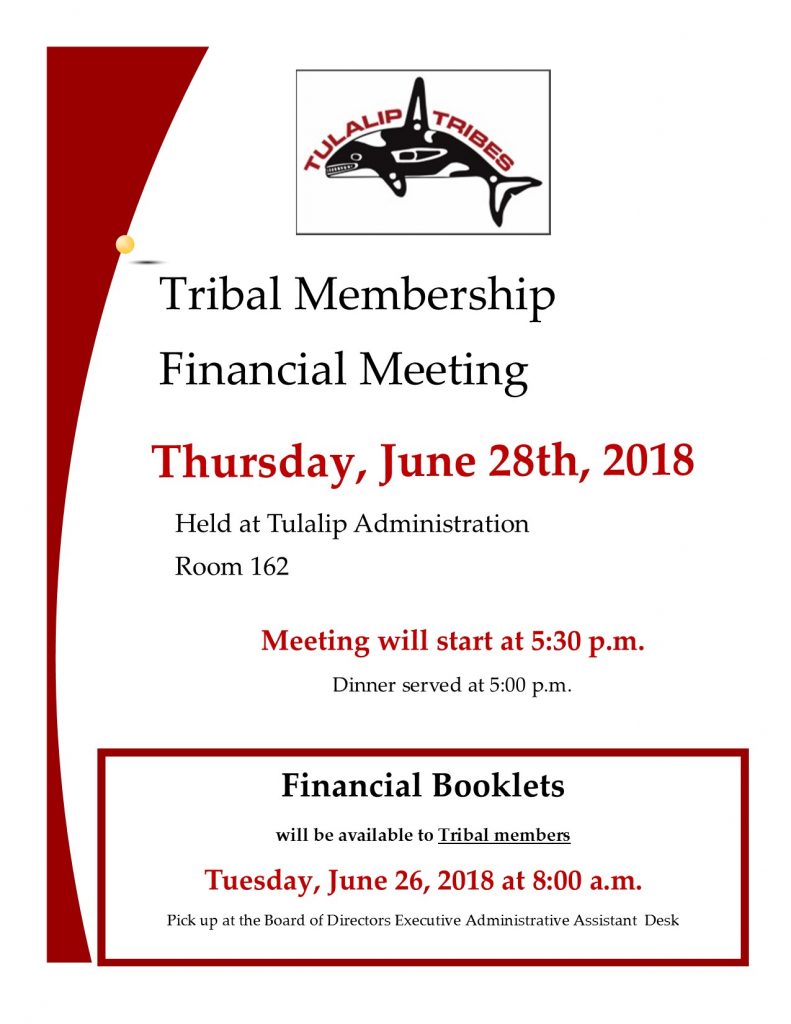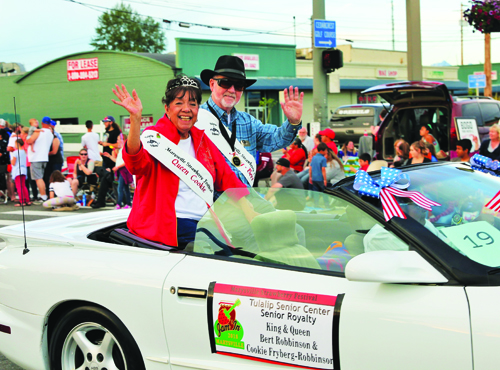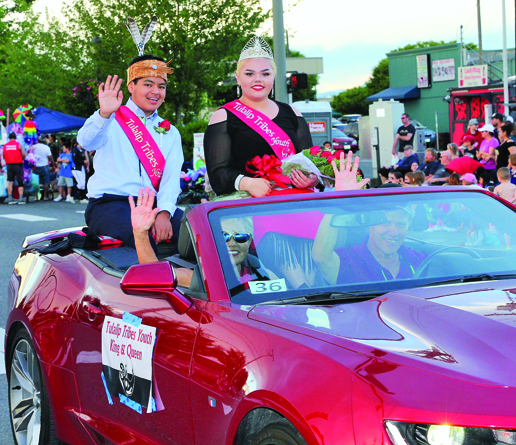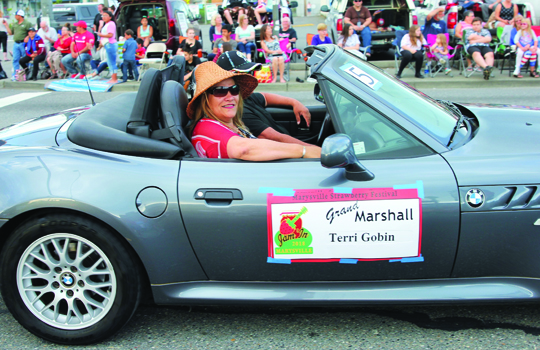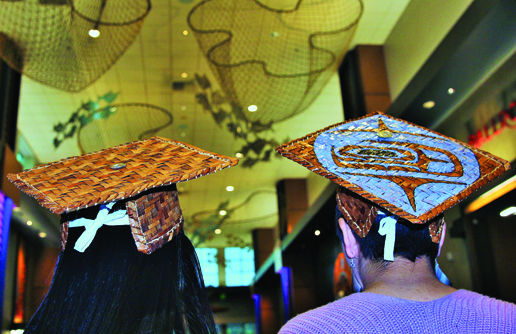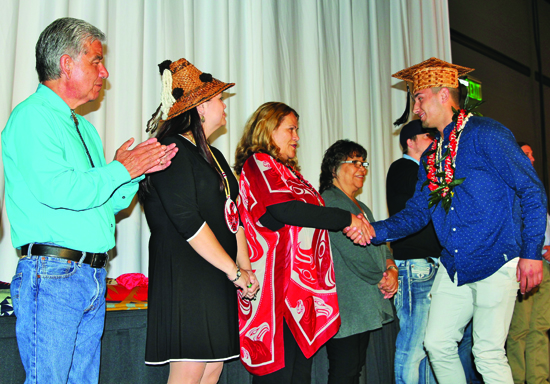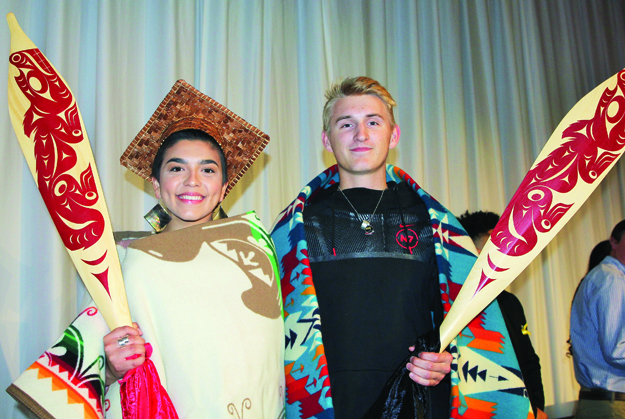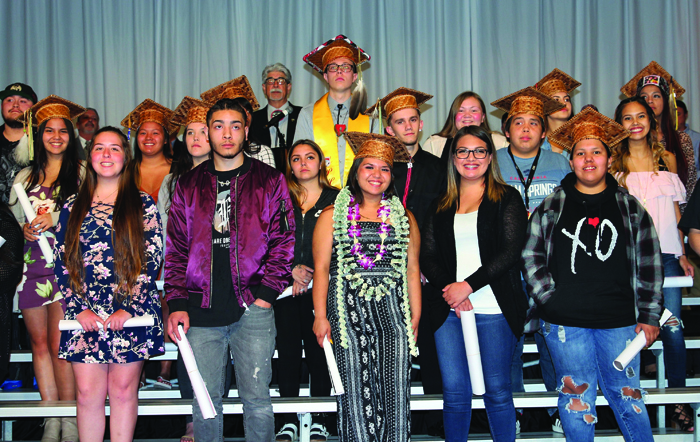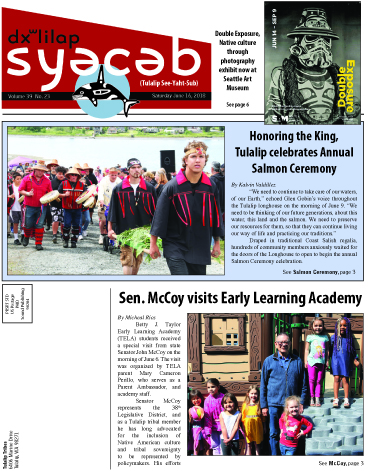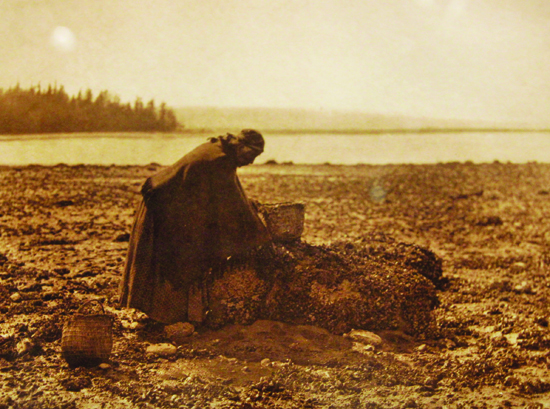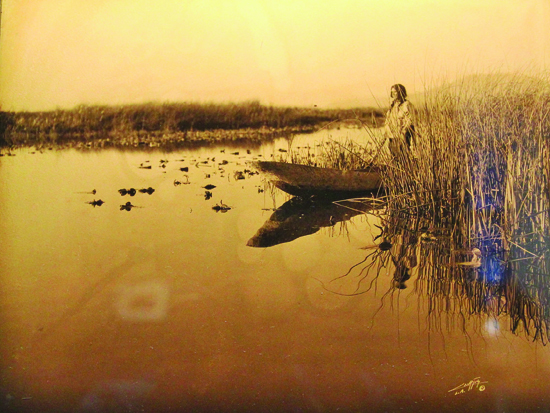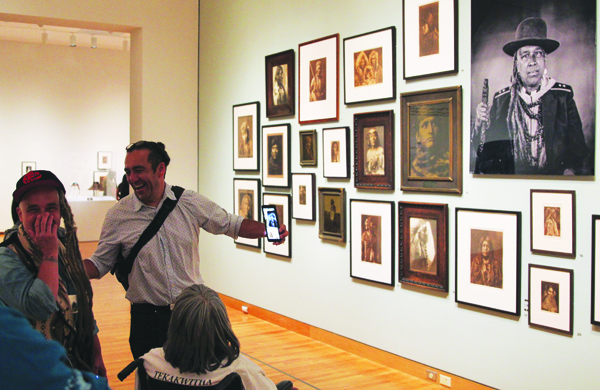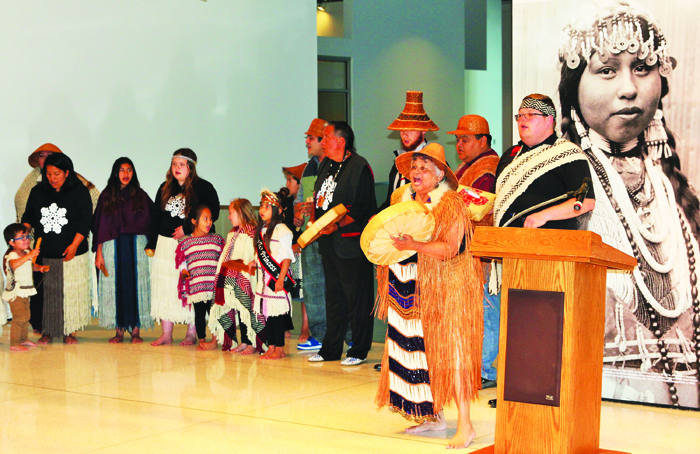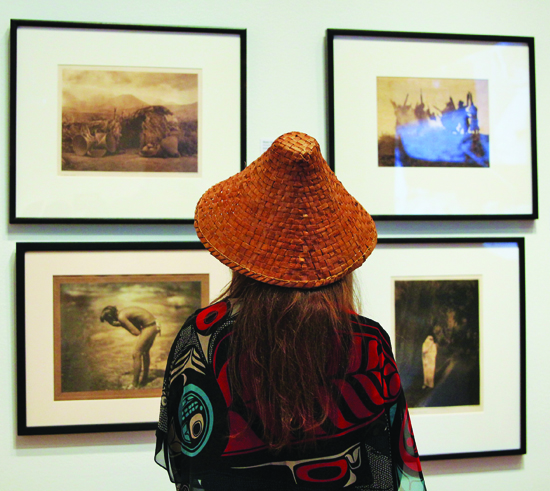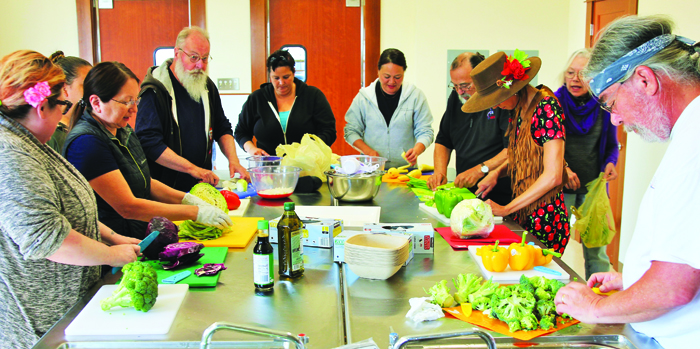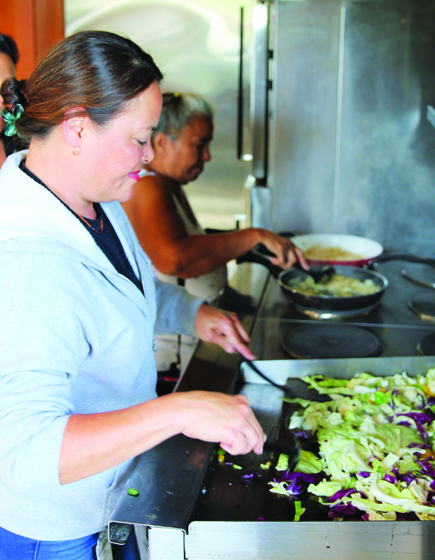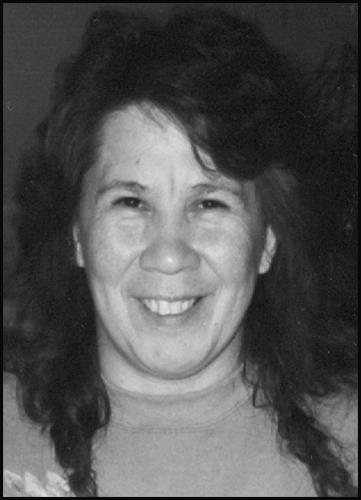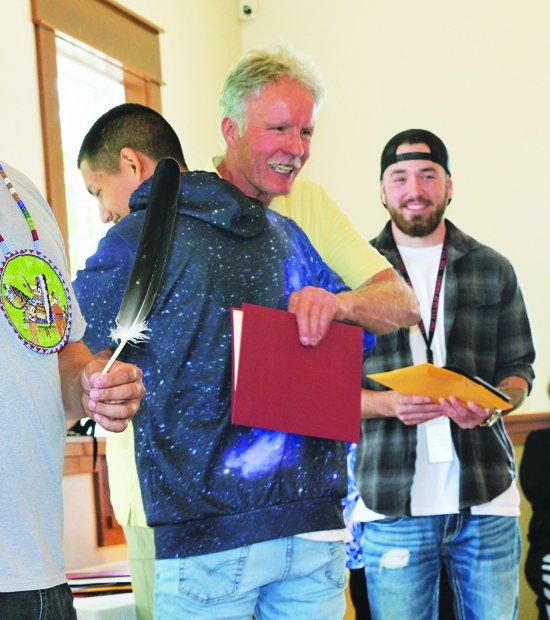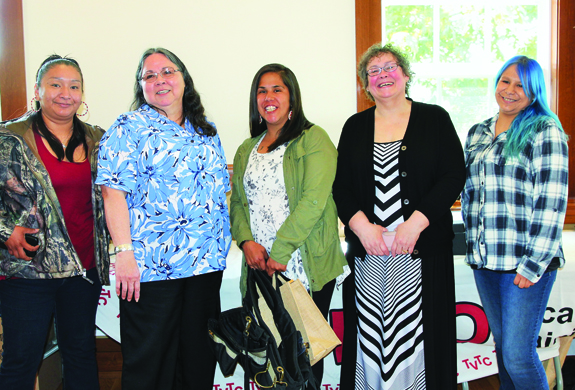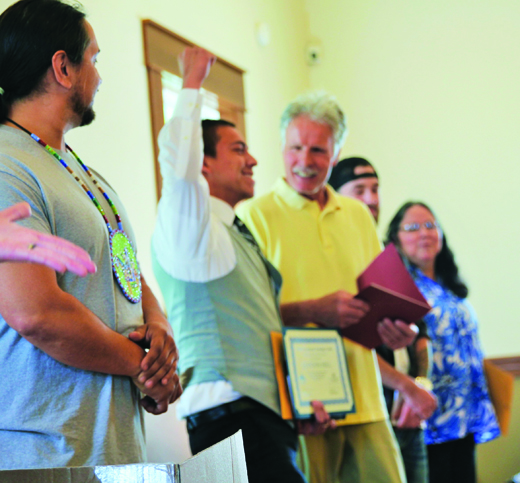Parade highlights Strawberry Festival celebration
By Micheal Rios, Tulalip News
A Marysville/Tulalip community tradition since 1931, thousands of families filled the sidewalks of State Street on Father’s Day to enjoy the Strawberry Festival’s Grand Parade. Tulalip Resort Casino was recognized as the top-level, Orca sponsor for the 87th annual Strawberry Festival.
The festival took place over the weekend of June 15 to 17. During those days Marysville Middle School and Asbery Field were home to children’s activities, live entertainment, a talent show, craft making, a large outdoor market, and a fun for all ages carnival. Concluding the festival was the Grand Parade.
Tulalip was well-represented with a variety of themed displays throughout the parade, adding to the spectacle of stunning visuals and raucous sounds. Tulalip Bay Fire and the police department lent the sirens of their emergency services vehicles to signal the parade’s start.
Board of Director Teri Gobin served as Grand Marshall.
Beginning at 7:45pm, the parade lasted approximately 90-minutes, ending shortly after sunset. Unlike years past, there was no dazzling firework show to mark the parade’s end because of Marysville’s city-wide ban on fireworks, even for display purposes.
Tulalip Tribes celebrates 2018 graduates
On the evening of June 12, Tulalip Resort’s Orca Ballroom was home to hopes and dreams aplenty as the graduating class of 2018 was recognized with a graduation banquet. In all there were seventy-four high school graduates and forty-eight higher education graduates who, accompanied by their proud families and friends, convened to commemorate the rite of passage.
There was entertainment, a catered buffet-style dinner, and plenty of motivational words offered from their peers and elders reminding the graduates this is just the first step on the path to success.
“It is a privilege and an honor to be here with you all on this special night where we come together and celebrate the academic achievement of our young ones,” stated Board of Director Mel Sheldon, banquet emcee. “We are so proud of each and every one of our graduates for their commitment to education. We thank the parents, grandparents, extended family, and all the school faculty who were always there for the students and made it possible for them to be here today.”
Graduating high school senior Keryn Parks, along with higher education graduates Kaeli Grenier-Moses and Marci Fryberg Johnson each took to the stage and offered encouraging words to fellow graduates. They reminisced over their favorite school experiences, spoke of hardships overcome, thanked their families and Tulalip community for always supporting them, and shared their excitement for great things yet to come.
“It’s an honor to speak on behalf of Tulalip Heritage and the entire graduating class of 2018,” said Keryn. “The road to graduation may have been easy for some, but has been difficult for others. Our class was dealt with the heaviest card any freshmen class could go through. There were setbacks, breakdowns, a lot of pain, and a community separated. Yet, through all that we found strength and healing that brought us closer. Class of 2018, never doubt how far you can go, but most importantly don’t ever forget what you have accomplished.”
Marci, representing the higher education graduates, shared details from her fifteen year journey to earn a Bachelor’s Degree. “Being educated has been instilled in me since I was a little girl. Having an education allows for us to move beyond the ignorance we will encounter in the world, and to stand tall and represent our Native people in a good way.”
Nikkita Oliver, activist, educator, lawyer and spoken word artist, provided a truly memorable keynote speech that left many in the crowd feeling inspired. She is a University of Washington graduate who has committed herself to empowering others to reach for goals larger than themselves.
“Being here, at a gradation, is something very powerful. For our peoples, rites of passage are something that we’ve been going through for a long time. Maybe it didn’t always look like a graduation from a school, but we’ve long celebrated what it means to complete a season in our life and to celebrate the lessons and knowledge we have gained,” explained Nikkita, former city of Seattle mayoral candidate. “Look around this room. I was told there are a thousand people in here. There are seventy high school graduation and forty college graduates, and somehow that adds up to a thousand people.
“Dream what you want to have with these thousand people. Dream about who you want to be with these thousand people. That’s far more important than what your next step is tomorrow because what that vision will do is become your guiding principle. It’ll become the way you think about the world and become the way that you think about yourself.
“No matter what statistics say about you, no matter what stories society tries to tell about you, you should always dig deep into your own history. Look to the perseverance of your own people, to the resilience that’s already been set before you and understand that you can push through any obstacle.”
Following the inspiration keynote speech a special recognition ceremony was held to honor the Tulalip Tribes senior boy and girl student of the year.
Keryn Parks, a graduate of Tulalip Heritage High School, received the female student of the year honor. Having overcome adversity and hardship early on as a freshman, Keryn went on to be a tribal youth representative, active ASB participant, and two sport athlete in basketball and volleyball, all while maintaining a high G.P.A. and taking college classes through Running Start.
Coby Nelson, a graduate of Marysville Pilchuck High School, received the male student of the year honor. Coby balanced his academic course load with playing varsity golf, tennis, and baseball. One teacher said, “As with all families the children are called upon to take responsibilities and help out with the task of family life. I’ve observed this young man helping his family, taking on adult responsibilities, and volunteering to help many of his peers at school. He’s a polite and humble young man.” Another teacher said, “He’s one of the most caring young adults that I know. He has a kind heart and shows so much compassion for those younger and less fortunate than himself.” Coby plans to attend Washington State University in the fall.
Concluding the evening’s celebration, former youth council chairwoman Jlynn Joseph shared, “This was a very emotional event for my family. We’ve worked so hard to keep me on my path to academic success. I will be the first in my immediate family to have graduated on time from high school. My great grandma, the late Loretta James, has inspired me so much and has been my driving force to give back to my community and to use my future degree to take care of the people.” Jlynn excelled at Bishop Blanchet High School, a private school in Seattle, and will be continuing her education at Arizona State University in the fall.
Congratulations to all those Tulalip students who put in the hard work and dedication to earn their graduate status. Chasing a dream requires your efforts and passion. The hard work isn’t over now that you have graduated, it’s only the beginning as you now prepare for the new challenges waiting in the next chapter of life. Good luck and congratulations!
June 16, 2018 syəcəb
Please use the following link to download the June 16, 2018 issue of the syəcəb:
https://www.dropbox.com/s/nofbyfs85uiwogf/SYS%2006162018.pdf?dl=0
Major exhibition presents a Native-activated space, explores legacy of Edward S. Curtis
By Micheal Rios, Tulalip News
The Seattle Art Museum (SAM) presents Double Exposure: Edward S. Curtis, Marianne Nicolson, Tracy Rector, Will Wilson (on display from June 14 – September 9). Featuring iconic early 20th-century photographs by photographer Edward S. Curtis alongside contemporary works – including photography, video, and installations – by Indigenous artists Marianne Nicolson, Tracy Rector, and Will Wilson. Their powerful portrayals of Native identity offer a compelling counter narrative to the stereotypes present in Curtis’s images.
Edward S. Curtis is one of the most well-known photographers of Native people and the American West. Double Exposure features over 150 of his photographs. Threaded throughout the galleries of his works are multimedia installations by Marianne Nicolson, Tracy Rector, and Will Wilson. Their work provides a crucial framework for a critical reassessment and understanding of Curtis’s representations of Native peoples, while shedding light on the complex responses Natives and others have to those representations today.*
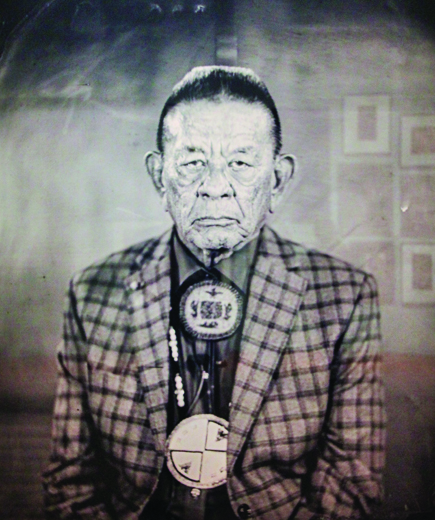 “The historical significance of Curtis’s project is well-established,” says Barbara Brotherton, SAM’s Curator of Native American Art. “In many cases, his photographs and texts provide important records of Native culture. However, it’s time for a reevaluation of his work. His methodology perpetuated the problematic myth of Native people as a ‘vanishing race.’ This exhibition reflects a collaboration among SAM, the artists, and an advisory committee comprising Native leaders to make a space for a reckoning with Curtis’s legacy.”
“The historical significance of Curtis’s project is well-established,” says Barbara Brotherton, SAM’s Curator of Native American Art. “In many cases, his photographs and texts provide important records of Native culture. However, it’s time for a reevaluation of his work. His methodology perpetuated the problematic myth of Native people as a ‘vanishing race.’ This exhibition reflects a collaboration among SAM, the artists, and an advisory committee comprising Native leaders to make a space for a reckoning with Curtis’s legacy.”
Three contemporary Indigenous artists in Double Exposure challenge assumptions about Native art and illustrate how Native communities continue to creatively define their identity and cultures for themselves. First Nation artist Marianne Nicolson created an immersive sculptural light installation that casts moving shadows to address the impact of the 1964 Columbia River Treaty on Native communities.
Seminole and Choctaw filmmaker/artists Tracy Rector empowers Indigenous communities by capturing the activism, defiance, and reclaimed traditions of Native tribes through her new video work of short stories derived from environmental awareness and life experiences of Natives today.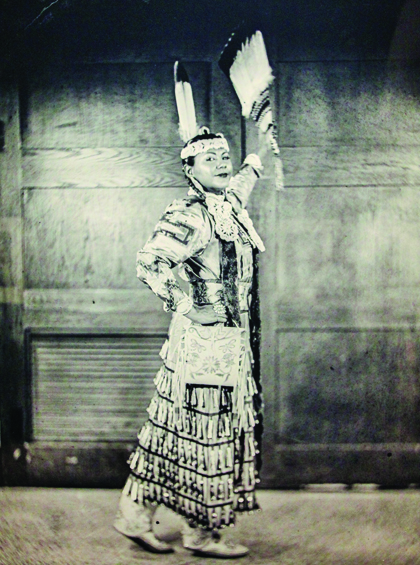
“All of my work is centered in Indigenous story: for, by, and about Indigenous people,” says Rector, whose video will welcome viewers inside a “Native-activated space” surrounded by related art.
Will Wilson’s large-scale tintype portraits feature Native lawmakers, artists, educators, and community members from the Seattle area. Artist Tracy Rector, Senator John McCoy, and others will speak through “talking” tintypes created using augmented reality. Wilson, a Navajo/Diné photographer, aims to counter stereotypes that Curtis’s work propagated.
“I want to supplant Curtis’s ‘settler’ gaze and the remarkable body of ethnographic material he compiled with a contemporary vision of Native North America,” states Wilson.
Double Exposure is a chance to see art of Native Americans in all its complexity through each of these artists’ perspectives on culture and identity.*
In honor of Double Exposure’s opening, the Seattle Art Museum invited any individuals with tribal affiliations to be the first visitors to view the exhibit. Dubbed ‘the Indigenous Peoples opening’, held the evening of June 11, representatives from many Coast Salish tribes gathered at SAM for the free event which included admission to the exhibit, performances by the Suquamish canoe family, and songs shared by Lummi violinist Swil Kanim.
“This Indigenous-only celebration was inspired by Miranda Belarde-Lewis (Tlingit/Zuni),” explains artist Tracy Rector. “She suggested the idea of decolonizing curation and what it means to indigenize museum spaces. Having a Native-centered exhibit opening is a way we could be in community experiencing artwork together.”
*source: Seattle Art Museum press releases, exhibition literature
Image credits: Kalamath Lake Marshes, 1923, Edward S. Curtis, goldstone. Mussel Gatherer, 1900, Edward S. Curtis, photogravure. John McCoy (Tulalip) – Talking Tintype, 2018, Will Wilson, exhibition print. Madrienne Salgado (Muckleshoot) – Talking Tintype, 2018, Will Wilson, exhibition print.
Edward Lil George Sneatlum
 Edward Lil George Sneatlum, 44 of Auburn, died June 6, 2018 in Everett, WA. He was born May 15, 1974 to Charles Ronald Sneatlum & Janet D. Patrick in Everett. Edward attended school in Tulalip, WA & Chemawa School in Salem, OR. After school he started in the gaming business in Tulalip & continued in Muckleshoot. He was a general laborer. Edward enjoyed stick games, fishing, hunting, playing pool, gambling and going to concerts. He was a member of Qua-Qua Amus Long House since 1990. He is survived by his wife, Kimberly Sneatlum of Auburn; step-daughters, Sonya Williams of Auburn, 3 grandchildren, Kelsey, Kimberly & Elizabeth all of Auburn. He is also survived by his mother, Janet Patrick of Tulalip; step-daughter, Alondra Velador; brothers, Charles Sneatlum & Timothy Jones both of Tulalip, numerous, aunts, uncles, cousins, nieces, & nephews. Edward was preceded in death by his father, Charles Sneatlum, Jr., grandfather, Charles A. Sneatlum, Sr., grandmother, Shirley Marie Sneatlum, grandparents, Wesley & Joyce Patrick, Aunt Sheryl Sneatlum – Teo, Aunt Charmaine Sneatlum, cousin, Derek Sneatlum, niece, Courtney Aho, niece, Ashley Aho, nephew, Michael Sneatlum, aunt Sunnee Sneatlum, uncle Cliffy Sneatlum, aunt Emeline Patrick, uncle Daniel Patrick, uncle Leonard “Abner” VanPelt, cousin, Cheryl Bagley, step-son, Robby K. Kublic & uncle Amos A. Bob & cousin, Justine Comenote. A visitation will be held, Sunday, June 10, 2018 at Weeks’ Funeral Home, 451 Cemetery Rd., Buckley, WA. Funeral service will be held, Monday, June 11, 2018 at 8:00 a.m. at Muckleshoot Pentecostal Church with burial at Mission Beach Tulalip Cemetery.
Edward Lil George Sneatlum, 44 of Auburn, died June 6, 2018 in Everett, WA. He was born May 15, 1974 to Charles Ronald Sneatlum & Janet D. Patrick in Everett. Edward attended school in Tulalip, WA & Chemawa School in Salem, OR. After school he started in the gaming business in Tulalip & continued in Muckleshoot. He was a general laborer. Edward enjoyed stick games, fishing, hunting, playing pool, gambling and going to concerts. He was a member of Qua-Qua Amus Long House since 1990. He is survived by his wife, Kimberly Sneatlum of Auburn; step-daughters, Sonya Williams of Auburn, 3 grandchildren, Kelsey, Kimberly & Elizabeth all of Auburn. He is also survived by his mother, Janet Patrick of Tulalip; step-daughter, Alondra Velador; brothers, Charles Sneatlum & Timothy Jones both of Tulalip, numerous, aunts, uncles, cousins, nieces, & nephews. Edward was preceded in death by his father, Charles Sneatlum, Jr., grandfather, Charles A. Sneatlum, Sr., grandmother, Shirley Marie Sneatlum, grandparents, Wesley & Joyce Patrick, Aunt Sheryl Sneatlum – Teo, Aunt Charmaine Sneatlum, cousin, Derek Sneatlum, niece, Courtney Aho, niece, Ashley Aho, nephew, Michael Sneatlum, aunt Sunnee Sneatlum, uncle Cliffy Sneatlum, aunt Emeline Patrick, uncle Daniel Patrick, uncle Leonard “Abner” VanPelt, cousin, Cheryl Bagley, step-son, Robby K. Kublic & uncle Amos A. Bob & cousin, Justine Comenote. A visitation will be held, Sunday, June 10, 2018 at Weeks’ Funeral Home, 451 Cemetery Rd., Buckley, WA. Funeral service will be held, Monday, June 11, 2018 at 8:00 a.m. at Muckleshoot Pentecostal Church with burial at Mission Beach Tulalip Cemetery.
Journey to a healthier you
By Micheal Rios, Tulalip News
Everyone wants to live a healthy life. The ideal health for most is reached by eating nutritious meals to fuel the body and mind, while being balanced with enough physical activity to keep the body working properly.
But where does one start? There seems to be an endless amount of questions to ask and information to gather before starting a journey to a healthier you. Luckily, for the Tulalip community, the Supplemental Nutrition Assistance Program Education (SNAP-Ed) and a team of health experts are here to help by offering a series of nutrition and cooking classes that are fun and interactive.
Eat Smart, Be Active classes will be taking place every Tuesday from now until July 31 at the Tulalip Dining Hall from 5:00pm – 6:30pm. If you are interested in learning more about whole foods, quality health, exercise, meal prepping, or cooking quick and healthy meals on a budget, then this is the perfect opportunity.
“Making healthy lifestyle changes is not an easy thing to do, but in the end the reward is so worth it!” stated AnneCherise Jensen, SNAP-Ed Nutritionist. “Eat Smart, Be Active classes really do give you an opportunity to learn, to ask questions, to discuss, and gain the tools you and your family need to live a happy, healthy, energetic life. Overall, these classes are very positive, energetic, and fun. We have a great preventative care team that truly cares about your health and wellbeing.”
Eating healthy doesn’t have to mean dieting or giving up all the foods you love. During the opening class on Tuesday, June 5, the twenty-five health conscious participants learned about ditching junk food and give their bodies the nutrient-dense fuel it needs by making a meal together. The main course? A delicious chicken stir fry made with nine different flavorful vegetables.
After learning a 15-minute aerobic exercise routine that can be done at the comfort of home, the community members received basic cooking instruction before gathering in the kitchen. There each participant had a job to do in order to make the evening’s meal. Finally, while enjoying the freshly prepared chicken stir fry, instructors reviewed all the nutrients being consumed and emphasized how simple the process had been.
“It was empowering as a community to get together and participate in a healthy, nutritious meal,” added AnneCherise after the evening class had ended. “There are so many amazing health benefits to making these small, gradual changes. You start to have more energy, you begin to feel more confident in yourself, you find yourself in better moods, and the more and more you do it – the more friends you will find to exchange recipes with and encourage each other along the way.”
If you missed out on the opening class, no worries. The invite is open to anyone who wishes to learn about healthier lifestyle choices when it comes to nutrition and physical activity. Come in to as many classes as you can, if not all of them.
Questions? Please contact AnneCherise Jensen, SNAP-Ed Nutritionist at 360-716-5632 or ajensen@tulaliptribes-nsn.gov OR Brooke Morrison, Tulalip Diabetes Prevention Assistant at 360-716-5617 or bmorrison@tulaliptribes-nsn.gov
‘Go Hard or Go Home’ league wraps up spring season
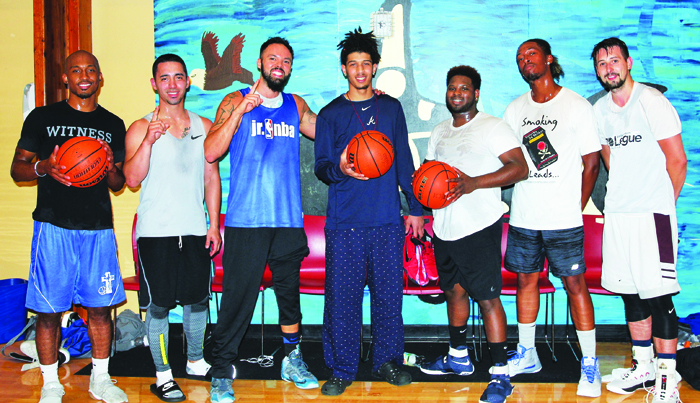
By Micheal Rios, Tulalip News
Established in February 2015, the Go Hard or Go Home community basketball league is organized by Youth Services staff and has gained more notoriety with each passing season. Local ballers can be found competing on the hardwood every Monday and Wednesday evenings at the Tulalip Youth Center.
The league is a prime outlet for basketball players of every level. And most importantly, everyone is welcome to participate. There are former high school stand-outs, a couple college players, but mostly people who just love the sport.
After paying a modest fee of $200, each team played a nine-game regular season and everyone had a spot in the postseason playoffs. Giving Tulalip ballers the best bang for their buck has been a priority of the community league. In fact, costs have been minimal and the amount of games plenty when compared to most basketball leagues.
Spring season saw nearly ninety players make-up the ten teams vying for bragging rights and making the most out the opportunity to play competitive, localized basketball. Ages ranged from early teens to elder statesmen.
“This league is great for the community,” said Fred Brown Jr., long-time community friend and lead-referee of the past season. “Spring season ran for three-months, giving people in the community something to do either as players or spectators. Most interesting to me was the variety of basketball games. There were high-flyers, 3-point specialists, under the rim fundamentally sound guys, and then those playing to get into shape or to stay in shape. It was a good basketball season for everyone involved.”
Tina Louise Pacheco (1962 – 2018)
Tina Louise Pacheco, 56, of Tulalip, WA, left to be with her parents on June 2, 2018. She was preceded in death by her parents, Hirontimus and Magdalen Monger in 1992. She also was preceded by her brothers, Joey Pacheco and Daryle Pacheco. She married Scott Danielak in 1996. She helped to mother her step-children: Jesse, Jana, and Kaitlyn. She had one son, Damon Hatch. She is survived by her life partner and best friend, Tia Ward. She leaves behind her siblings: Anita (Randy) Rodgers, Lucinda Cladoosby, Charles Vassar, Robert (Lisa) Monger, Rose (Kevin) Webb, and Mark Monger. She also had many nieces, nephews, and cousins that she loved very much. She graduated from Chemawa Indian School. She loved to travel and Hawaii was her favorite destination. She was a professional photographer and took thousands of pictures of family, friends, graduations, weddings, and funerals. She owned a business called Just Your Style. She was a minister to all she came to know. She was the first to show up when there was a death in the family of a close friend or tribal member. Many stories are told of when she helped in very loving ways. Her final occupation was as a Safety Coordinator. She trained others about first aid and safety. She also worked to help others be prepared for any emergency. She always had what anyone needed in her car. We are all left better because she was part of our lives. Visitation will be held Thursday, June 7, 2018 at 1:00 p.m. at Schaefer-Shipman with an Interfaith service to follow at 6:00 p.m. at the Tulalip Gym. Funeral Services will be held Friday at 10:00 a.m. at the Tulalip Gym with burial to follow at Mission Beach Cemetery.
Building a better future with Tulalip’s construction career program
By Micheal Rios, Tulalip News
Educators, parents and others often place emphasis on college preparation and earning an Associate or Bachelor’s degree by traditional means. But some students see a more hands-on future for themselves. For those unafraid of getting their hands dirty and learning the true meaning behind a hard day’s work there are ample opportunities available within the construction industry.
In fact, look around the Seattle area and you’ll see more cranes than you can count. While other career pathways may be oversaturated and hard to come by, the construction trades are booming. According to the U.S. Department of Labor, open construction positions are expected to increase by more than 745,000 jobs nationally through 2026, a faster growth than any other occupation. In Washington State alone, there are already more than 3,200 unfilled construction jobs, of which many pay more than the average state wage of $54,000 a year.
Whether it be laborer, carpenter, ironworker or heavy equipment operator, there are countless openings for work and advancement within construction trades, especially for sought after minorities, like Native Americans and women. A major access point for entry into the construction trades for tribal citizens and their families continues to be Tulalip’s own TERO Vocational Training Center (TVTC).
On Wednesday, May 30, eighteen TVTC students were honored with a graduation banquet for their commitment to building a better future. Over 200 guests attended, including several Board of Directors, trade union representatives, and many cheerful friends and family members of the graduates.
Of this latest graduating cohort, nine students are Tulalip tribal members, two are children of tribal members, and seven are other Native. Three hardworking ladies were among the graduates; Sela Kalama (Quinault), Verla Wapato (Yakama) and Pamela Dick (Colville). The desire to build a new skillset while creating new career pathways was the main motivator, as each of these three women left their home and children in order to reside within the Tulalip area for the duration of the intensive, sixteen-week pre-apprenticeship construction trades program
As far as we know, the TVTC program, which is managed by the Tulalip TERO, is the first and only state and nationally recognized Native American pre-apprenticeship program in the country. The program is accredited through South Seattle Community College and Renton Technical College, while all the in-class, hands-on curriculum has been formally approved by the Washington State Apprentice and Training Council.
The sixteen-week program provides 501-hours of hands on instruction, strength building exercise, and construction skills that can last a lifetime. In addition, students are trained and awarded certifications in flagging, first aid/CPR, and OSHA 10-hour safety training. Also, students receive certification in the scissor lift, boom lift, industrial fork lift, and powder-actuated tools. Upon completion, each graduate’s diligent training is rewarded with a wide-range of new employment opportunities as they navigate the construction trades career path.
“I took this class to better my work experience, gain new skills, and become more comfortable with interviews,” said Tulalip tribal member and now TVTC graduate, Izzy Wolftail. “My favorite part of the TVTC experience was making new friends from different tribes and working side-by-side with them to complete our tiny home project. I plan on bettering my future and the Tribe with my new skills.”
TVTC pre-apprenticeship is a unique, nationally known model that supports tribal members from sovereign nations across the United States. The program is not dependent on tribal hard dollars. In fact, zero hard dollars are used to fund it. Instead, due to the dedication and commitment of so many individuals the TVTC program continues to grow and gain more recognition while being funded by the graciousness of the Tulalip Charitable Fund and W.K. Kellogg Foundation.
“This particular group of students was just tremendous,” described instructor Mark Newland during the graduation ceremony. “They came prepared and ready to work every single day. Each student was eager to learn and they worked really well with one another. It was a pleasure being their instructor.”
Under the supervision of Mark and co-instructor Billy Burchett, spring quarter students constructed four tiny homes as their final class project. These houses, which are approximately 120-square-feet in size, are the first batch of tiny homes that will be staying on the reservation, with plans for them to provide shelter for homeless tribal members. The insulated houses will be a major upgrade for their soon-to-be residents as they offer electricity, heat, and, most importantly, a measure of stability.
“Tulalip Tribes Board of Directors requested this TVTC cohort build the first four tiny houses for the Tribe. The Board provided the materials and the class built the houses,” explained Lynne Bansemer, TERO Coordinator. “According to instructor Mark Newland these were the best home that have been built to date by our students. We feel the reason is because they were built with love. Bringing this home has meant so much for the TERO and TVTC staff, but our students knew they were building for potential family and friends. What a difference this made!”
Beyond construction skills, several students, who are also tribal members, reached major milestones during the pre-apprenticeship program. Quinton Hill retrieved his driver’s license, while Carter Paul and Hayden Cepa both put in the work necessary to be awarded their high school diploma.
“For persons on the path to recovery, we have seen them find success during their time as TVTC students and beyond,” added Lynne. “This program introduces them to so many new experiences, shows them their unique individual strengths, and builds their confidence to new heights. We have had families reunited and people find the success they have hoped for because they are able to see daily how strong and capable they are.”
For more information on Tulalip TERO’s TVTC program or to inquire about admission into the next pre-apprenticeship opportunity, please contact Lynne Bansemer, TERO Coordinator, at 360-716-4746 or visit TVTC.TulalipTERO.com
